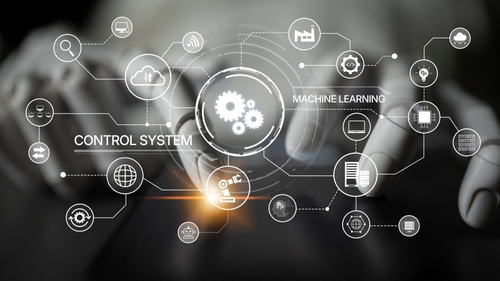How Integration Accelerates Automation and AI Enablement
70% of AI projects fail, not because the technology doesn’t work, but because the data behind it is trapped in disconnected systems. The challenge isn’t artificial intelligence itself; it’s systems integration. Many businesses start experimenting with AI in isolation, only to find their results inconsistent and their impact limited.
An AI-ready system is one where data flows seamlessly across platforms, enabling automation, improving accuracy, and supporting decisions that scale. This blog explores how systems integration provides the foundation for reliable AI adoption, with practical guidance on starting small, building flexibility, and preparing data for organisation-wide use.
How Systems Integration Accelerates AI Enablement
Systems integration is more than a technical exercise. It makes sure projects deliver outcomes that matter most to the business. When platforms such as CRM, ERP, and content systems are connected, integration enables automation, improves accuracy, and unlocks insights at scale.
When stakeholders clearly articulate their business strategy, it ensures integrations are designed to scale rather than hinder future growth. The focus is on identifying real challenges and success measures to build adaptable workflows. These integrations avoid short-term fixes and create a sustainable foundation for AI initiatives that add measurable business value.
The Bottom Line: Effective systems integration aligns technology with business goals, creating AI-ready systems that scale and deliver long-term value instead of isolated quick fixes.
First Steps to Begin Your AI Enablement Journey
The most effective way to begin is not by choosing a tool but by asking the right questions. Stakeholders should consider:
- Which time-wasting processes could be solved if systems shared information more efficiently?
- What opportunities would open if critical business data were connected?
Documenting both answers provides a clear starting point and forms the business case for prioritising integration and AI adoption.
Why It Matters: This ensures initiatives begin with genuine business value at the centre, avoiding misaligned, technology-first projects.
Three Guidelines for Starting AI Projects
Beginning an AI project does not mean jumping straight to advanced implementations. Successful AI projects often start with three essential guidelines:
Start Small: AI needs time to deliver meaningful results. Early projects should be narrow in scope and focused on achievable outcomes.
Stay Flexible: Systems must be designed for repeated testing, variable adjustments, and rapid iteration. AI maturity requires cycles of experimentation.
Know Your Data: Data quality determines AI outcomes. Organisations must understand where their information comes from, how it connects, and whether it is structured for AI consumption.
Why It Matters: Starting small, staying flexible, and focusing on data quality reduces the cost of experimentation while building a pathway to scalable, enterprise-level AI adoption.
Moving Beyond AI Experimentation
Many organisations have experimented with AI through individual use, but true business value emerges only when AI is integrated into organisational systems. Moving beyond isolated pilots requires five foundational elements.
First, success with basic AI use cases shows that the organisation understands how to frame problems AI can solve. Second, clearly defined business problems ensure that efforts focus on solving real challenges rather than applying technology for its own sake. Third, high-quality, accessible data provides the reliable foundation that makes AI outputs trustworthy. Fourth, secure access to relevant systems allows teams to integrate and scale safely. Finally, a culture of iteration and testing encourages continuous improvement and learning, which are essential for lasting success.
Without these foundations, scaling AI is difficult. With them, AI-ready systems can move from novelty to trusted tools that enhance decision-making, customer experience, and operational performance.
Key Takeaway: Organisations that embed AI within connected systems gain measurable improvements in efficiency and decision-making, moving from curiosity to enterprise-wide impact.
Common AI Implementation Mistakes and How to Avoid Them
Implementing AI is not without risks. Three common mistakes often derail projects:
Expectation mismatch: Treating AI as a finished product rather than an evolving capability. Like a new employee, it needs guidance and correction. For example, expecting an AI customer service tool to handle complex complaints on day one, without training data from your specific customer interactions, sets up inevitable disappointment.
Missing integration opportunities: Failing to connect data sources limits AI’s impact. We have seen organisations implement AI-powered inventory forecasting without linking it to their purchasing system, forcing manual data transfers that eliminate efficiency gains.
Over-focusing on tools: Choosing the right platform matters, but people, processes, and iterative approaches matter more. Teams often spend months debating whether to use Microsoft Azure AI or AWS SageMaker, when the real bottleneck is that their CRM and ERP systems do not share customer data.
Why It Matters: Avoiding these mistakes supports momentum, maintains stakeholder trust, and ensures AI initiatives deliver measurable ROI.
Measuring Progress and Managing Expectations
AI adoption requires new ways of measuring success, and stakeholder confidence depends on seeing progress early. Businesses should start by identifying multiple business justifications for systems integration beyond AI itself, such as faster approvals, improved workflows, or better reporting accuracy. These secondary benefits help mitigate risk if the AI component takes longer to mature than expected.
Highlight measurable early wins. For example, reducing customer service ticket resolution times from 48 hours to 6 hours shows an immediate impact while AI models continue to evolve. Establishing a 90-day window to demonstrate clear efficiency gains, whether in process automation, data accuracy, or turnaround times, helps maintain momentum and proves that the investment is delivering value.
Finally, present AI as a developing capability rather than a one-time implementation. Demonstrate how every iteration, even partial outcomes or lessons learned, contributes to long-term organisational improvement.
The Bottom Line: Early results reduce scepticism, maintain stakeholder trust, and secure ongoing support for the next phase of AI and systems integration initiatives.
How to Resource AI Integration Projects
Building AI-ready systems depends on both technical expertise and cultural alignment. There are two main ways to resource these projects effectively, each suited to different goals and timelines.
Hybrid resourcing: This model combines a consultant’s expertise with the organisation’s internal team. It is best suited when building internal capability is a strategic priority and long-term ownership of integrations is important. While this approach can take longer to deliver, typically three to six months, it embeds knowledge transfer, ensuring teams can manage and extend integrations independently in the future.
Integration as a Service: Ideal when speed to market is critical or integration needs are project-based. By outsourcing integration delivery, organisations can achieve outcomes in weeks rather than months, often at lower overall cost than developing full capability internally. This approach suits organisations that need rapid implementation or have limited internal technical resources.
Both models work best when supported by iterative project structures where systems are continuously tested, refined, and improved.
Why It Matters: Selecting the right resourcing model helps balance speed, cost, and capability. Hybrid models build sustainable in-house expertise, while Integration as a Service enables fast, efficient deployment that accelerates business outcomes.
Conclusion
Building AI-ready systems is not about chasing the latest tools. It is about creating a connected foundation where systems, data, and teams work in sync. Systems integration bridges the gap between business and IT, accelerates AI adoption, and reduces risk while ensuring every initiative delivers measurable outcomes. With the right strategy, quality data, and an adaptable mindset, organisations can move confidently from AI experimentation to lasting capability.
Ready to Build Your AI Foundation?
Integration is not a one-time project; it is an evolving capability. Creative Folks specialises in Integrations as a Service, helping organisations connect their systems quickly and cost-effectively without the need to build expertise in-house.
Our team can help you identify your highest-value integration opportunities and map a clear, practical path to AI readiness. Watch our webinar, A Smarter Approach to Automation and AI Enablement, where we share detailed strategies for aligning business objectives with IT delivery and ensuring your systems are truly AI-ready.







